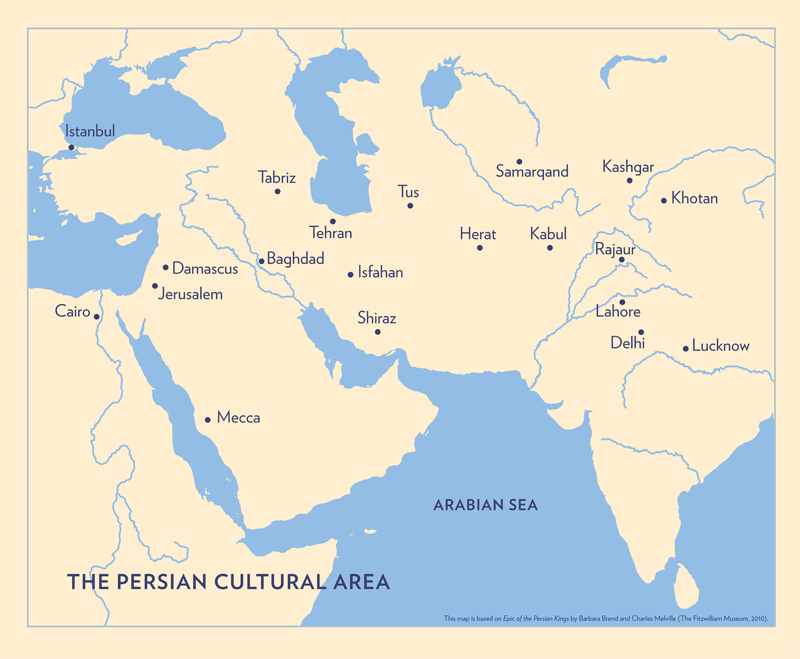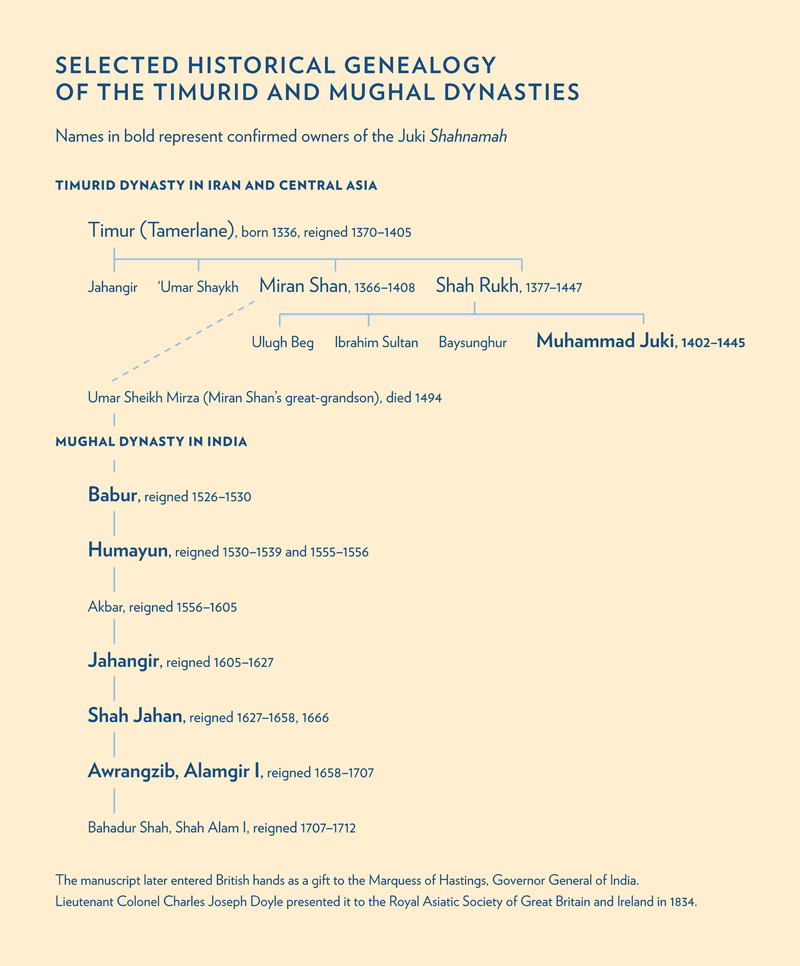Home / Timurid Patronage
Timurid Patronage
Timur, the Turko-Mongol founder of the Timurid dynasty, established a hold over western Central Asia and Iran beginning in the second half of the fourteenth century. At its peak his empire stretched from India to Anatolia. The Timurids were great patrons of the arts. At the royal and bureaucratic levels, they supported important architectural projects and the production of decorative arts, and under their patronage, Persian painting was elevated to the status of a major form of artistic expression. Timur’s heirs were great bibliophiles and today the period is still generally regarded as the time when the Persian book arts reached their height. The most important surviving Persian manuscripts from the first half of the fifteenth century were produced in Tabriz, Shiraz, and Herat—cities where Timur installed his sons and grandsons as governing princes.
The Shahnamah of Muhammad Juki was produced in the style of Herat, the Timurid capital of the fifteenth century and a city where the arts and learning were held in the highest regard. Some high-level patrons actually maintained private studios where craftsmen created the calligraphy, illumination, illustration, and bindings for lavish books. Two of Muhammad Juki’s brothers also commissioned copies of the Shahnamah that still survive today.
This Shahnamah is the only work that Muhammad Juki is known to have commissioned. The manuscript was left unfinished when he died and many important stories were left without illustrations. Some of the paintings that appear later in the manuscript may have been executed or enhanced in Mughal India.




 Share
Share